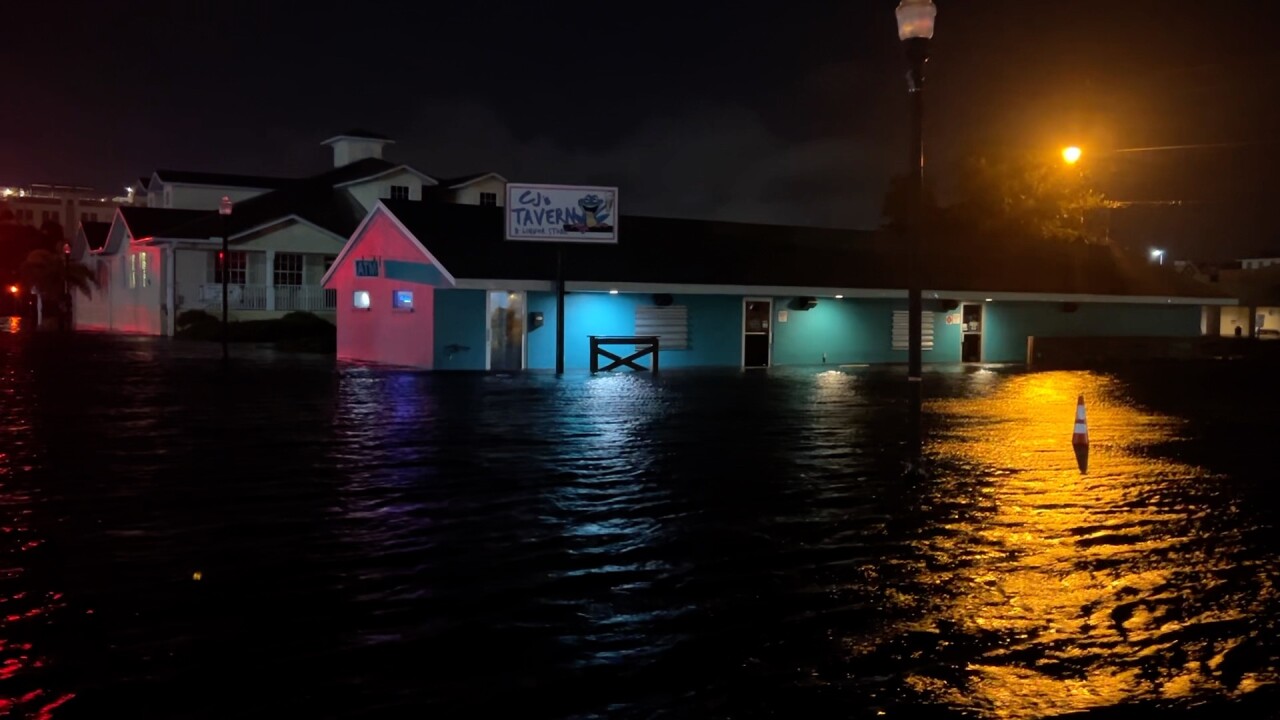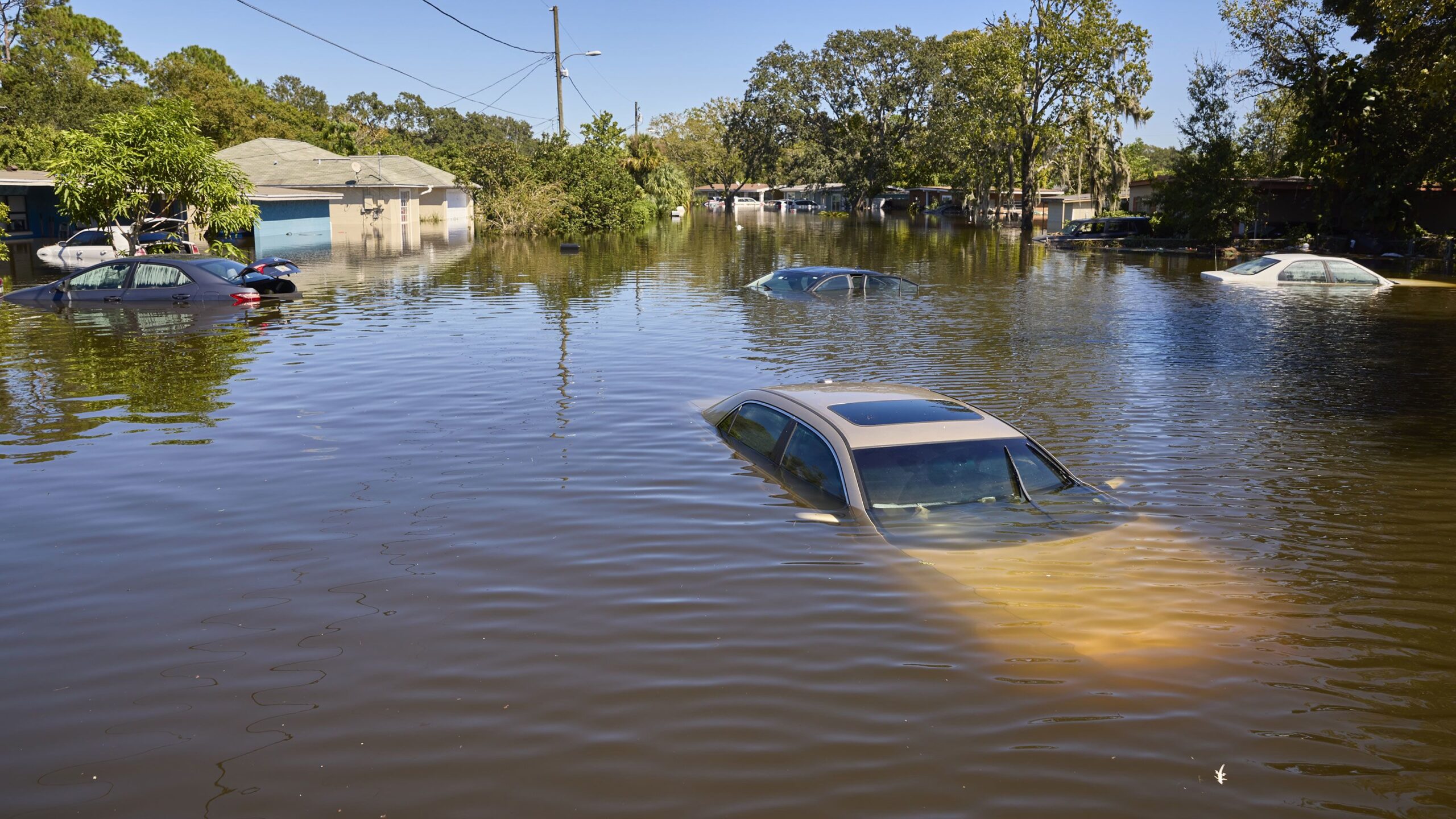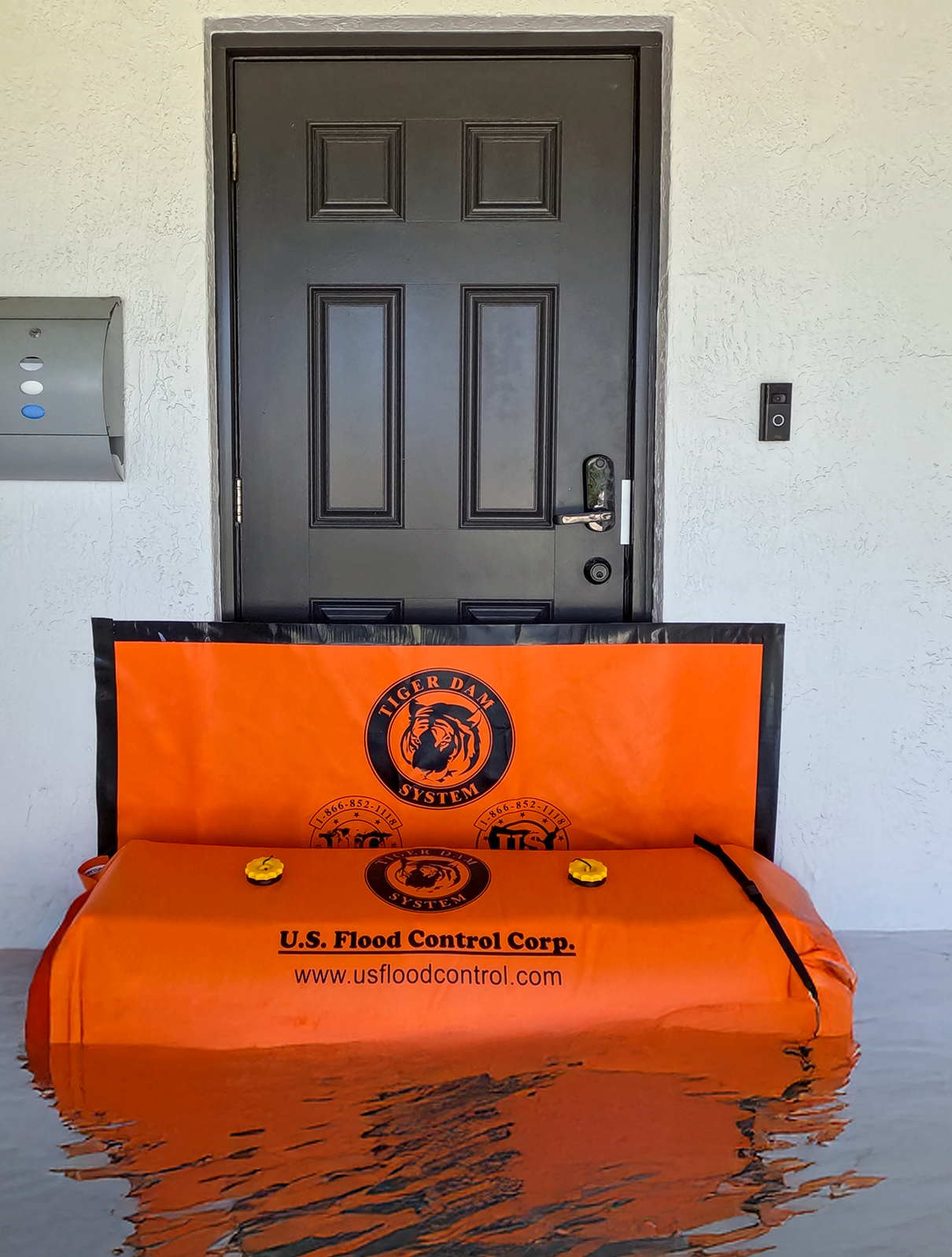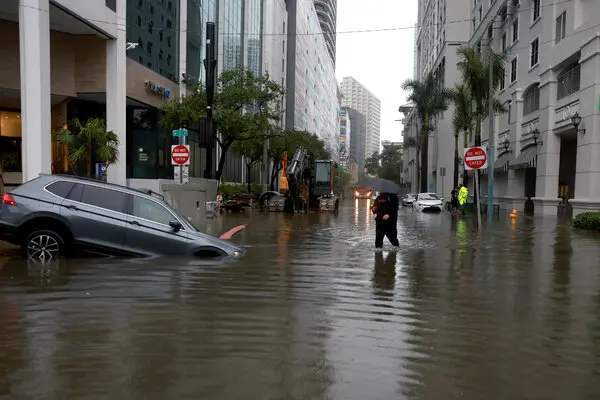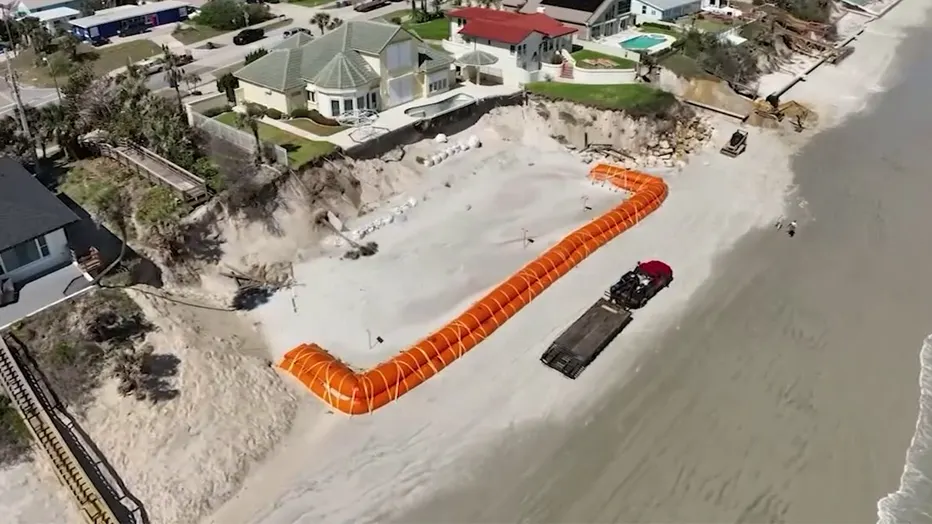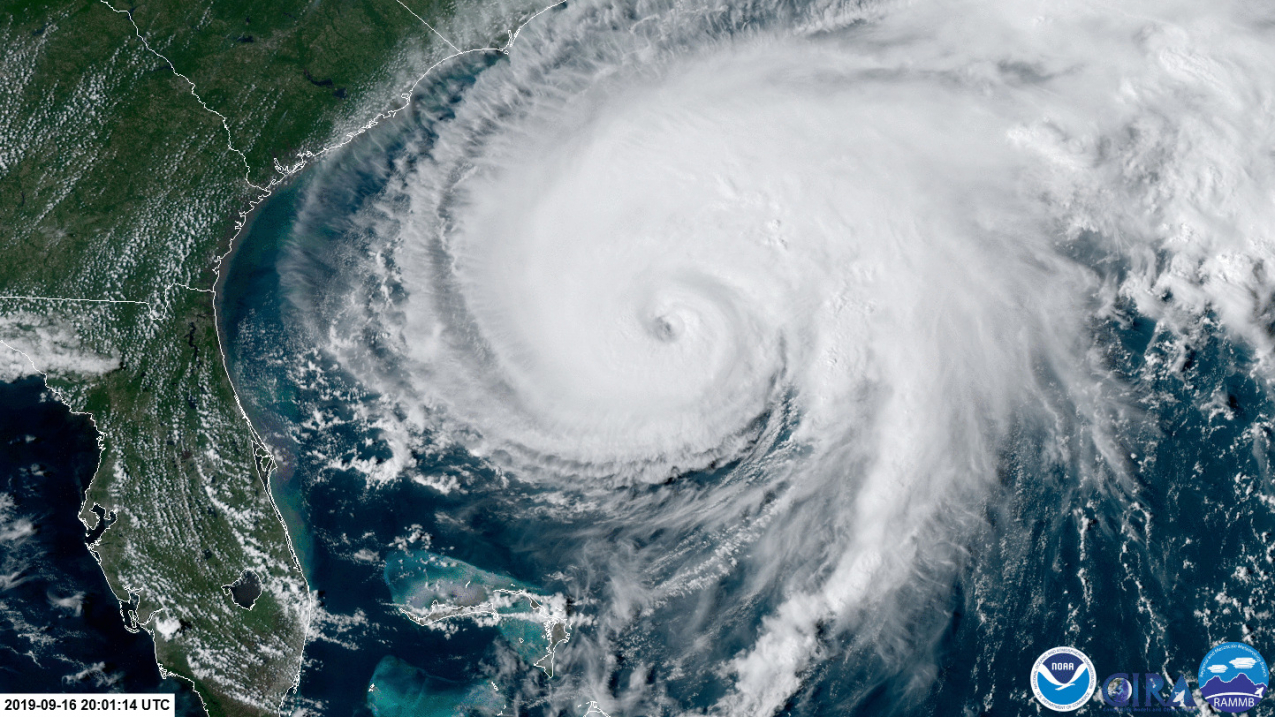Punta Gorda, Florida is taking proactive steps to combat future flooding. After suffering extensive damage from the unprecedented storm surges during Hurricanes Helene and Milton, city officials have approved a $420,000 investment in Tiger Dams.
Continue readingFlorida Expands Residential Flood Disclosure Requirements
Beginning October 1, 2025, an expanded residential flood disclosure law will go into effect, requiring sellers, landlords, and developers to provide more detailed flood history information to potential buyers and tenants.
Continue readingHow Tiger Dams Help Protect New Orleans—And How You Can Safeguard Your Home, Too
When floodwaters threaten, there’s no time to waste. That’s why communities across Louisiana—including New Orleans—are relying on the power of Tiger Dams to hold the line against rising water. But you don’t have to be a city agency or a hotel chain to benefit. With the Tiger Dam Home Door Kit, homeowners now have access to the same trusted technology used around the world.
Made in Louisiana. Proven Everywhere.
Developed and manufactured locally in Kenner, Louisiana, Tiger Dams are an inflatable flood barrier system that can be deployed in hours—not days. Once filled with water, the dam becomes a watertight shield that adapts to any surface—whether it’s sand, grass, concrete, or brick.
“It’s a poly-nylon blend that’s both robust and flexible,” says Dave Elvir, Vice President at U.S. Flood Control. “The weight of the water actually seals it to the ground, preventing seepage even on uneven terrain.”
That versatility is why Tiger Dams are used across Louisiana—from Grand Isle to Mandeville, and by major institutions like the New Orleans Sewerage and Water Board and several downtown hotels.
The Same Technology—Now for Your Front Door
Whether you’re worried about storm surge, rising rivers, or intense rainfall, the Tiger Dam Home Door Kit is a simple yet powerful solution to keep water out of your home. Each kit is compact, reusable, and quick to deploy—perfect for protecting vulnerable entry points during hurricane season.
And with the 2025 hurricane forecast predicting above-average activity, now is the time to act.
Hurricane Season Prep Tips: Protect Your Home Before the Storm
Being ready means more than just boarding up windows. Here are some essential steps to prepare:
1. Install a Tiger Dam Home Door Kit
Flooding often begins at the lowest points—like doors and thresholds. Our home kits are specifically designed to create a watertight seal around doorways in minutes.
2. Know Your Flood Risk
Even if you’re outside a designated flood zone, localized street flooding and storm surge can still cause damage. Don’t rely solely on flood maps—assess your elevation and local drainage.
3. Secure Important Documents and Valuables
Keep critical items in waterproof containers or store them on higher floors.
4. Test and Maintain Your Barriers
Make sure your Tiger Dam Home Door Kit is ready to go. Practice setting it up before you actually need it.
5. Build a Hurricane Supply Kit
Stock essentials: water, non-perishable food, batteries, medications, and a first-aid kit.
For over 25 years, Tiger Dams have protected infrastructure, businesses, and communities—saving billions in damages. Now, with our Home Door Kit, you can bring that same level of protection to your front doorstep.
Don’t wait until a storm is on the radar. Prepare today with Tiger Dams—and face hurricane season with confidence.
Recent Flooding in Miami: Protect Your Home with Tiger Dams
In recent weeks, Miami has experienced significant flooding due to heavy rainfall, setting new records and impacting various neighborhoods. On May 12, 2025, Miami shattered a daily rain record, with rounds of heavy rain flooding streets in the metro area and across large portions of Central and South Florida
Flood-Prone Areas in Miami
Certain neighborhoods in Miami are particularly susceptible to flooding:
- Edgewater: This neighborhood has faced recurring flooding issues. Residents have expressed frustration as heavy rains continue to flood the area, despite city efforts to mitigate the problem
- Cutler Bay: Located in a flat, low-lying coastal wetland area on Biscayne Bay, Cutler Bay is prone to flooding, especially during the rainy season when canals and lakes are frequently full, and the groundwater table is close to the surface .en.wikipedia.org
- Miami Beach: This area encounters tidal flooding during annual king tides, with certain roads flooding regularly. The city’s low elevation and porous limestone bedrock exacerbate the issue, making traditional barriers less effective
Protecting Your Home with Tiger Dams Home Door Kits
Given the increasing frequency of flooding events, homeowners in Miami are seeking effective solutions to protect their properties. One such solution is the Tiger Dams Home Door Kit, a reusable flood barrier designed to shield homes from floodwaters.
Key Features:
- Easy Installation: The kit can be set up quickly using a standard garden hose to fill the barrier with water, creating a seal against incoming water .usfloodcontrol.com
- Reusable and Eco-Friendly: Unlike traditional sandbags, Tiger Dams are reusable, reducing waste and environmental impact.usfloodcontrol.com
- Compact Storage: After use, the barriers can be emptied, dried, and stored compactly for future use.usfloodcontrol.com
Homeowners have praised the Tiger Dams Home Door Kit for its effectiveness and ease of use. One user noted, “The setup instructions were clear and straightforward, allowing me to set up the barrier without needing professional help. 10/10, would recommend to anyone!”
As Miami continues to grapple with frequent and severe flooding, it’s crucial for residents to take proactive measures to protect their homes. The Tiger Dams Home Door Kit offers an efficient and environmentally friendly solution to safeguard properties against flood damage. By investing in such protective measures, homeowners can mitigate the risks associated with living in flood-prone areas.
For more information on flood-prone areas in Miami and protective measures, you can explore the following resources:
Stay informed and prepared to protect your home from future flooding events.
Debunking Flooding Myths
From Miami to San Diego, flooding is now the costliest weather peril. Yet most households are still betting on three shaky safety nets:
- “My homeowner policy covers floods.”
- “Government aid will pay the bill.”
- “I’m not in a flood zone, so I’m safe.”
Spoiler: all three are myths—and believing them can drain your savings overnight. This guide busts each misconception and shows why portable Tiger Dams™ water‑filled barriers are a faster, cheaper, and far more certain line of defense.
Myth 1 — “My Homeowners Insurance Will Cover Flood Damage.”
Reality: In the US, standard home or contents policies exclude flooding. The U.S. Government Accountability Office puts it bluntly: “Most homeowners insurance policies don’t cover flood damage.”
- Fewer than 4 % of U.S. homeowners carry a separate flood policy.
- The average claim is ≈ $43 k, but FEMA grants (if you qualify) average only $5 k.
Bottom line: Check your policy today—and plan for physical protection tomorrow.
Myth 2 — “Government Disaster Aid Will Cover Everything.”
Reality: Federal or state aid is limited, slow, and often arrives as a loan you must repay.
- Fewer than 50 % of U.S. flooding events ever receive a federal disaster declaration, the prerequisite for FEMA grants or loans.
- Interest on disaster loans can exceed the annual premium for a solid flood‑insurance policy.
Counting on aid is like counting on a lottery ticket—except the stakes are your home.
Myth 3 — “I’m Outside the Flood Zone—So I’m Fine.”
Reality: One‑third of all U.S. disaster assistance for flooding and more than 25 % of FEMA claims come from areas outside high‑risk zones.
- Outdated maps miss rainfall‑driven flash floods and new upstream development.
- In North Carolina’s Buncombe County, < 1 % of homes carried flood insurance when recent riverside suburbs went under.
No map can predict the cloudburst that clogs your storm drains tomorrow.
The Soaring Price Tag of Flood Damage
- U.S. average flood claim: $43 k; severe events climb well into six figures.
A single foot of water can ruin flooring, drywall, and appliances—plus trigger costly mold remediation and months of displacement.
Take Action Before the Next Storm
- Audit Your Risk – Read the fine print of your policy; pull local flood‑history data.
- Size Your Entryways – Measure doors, garages, low vents; and choose Tiger Dams™ kits accordingly.
- Drill Deployment – Practice a 10‑minute “roll‑out, connect, fill” routine with family.
- Layer Defenses – Pair barriers with elevation blocks and a battery‑backup sump pump.
- Stay Ready – Keep hoses, pumps, and gloves with your Tiger Dams™ stack so you’re flood‑ready 24/7.
Conclusion: Myths Won’t Keep Water Out—Tiger Dams™ Will
Insurance exclusions, limited aid, and “low‑risk” labels leave millions exposed. Portable, reusable Tiger Dams™ put control back in your hands—stopping floods at the threshold instead of paying for them in drywall receipts.
Secure your home door kit today at usfloodcontrol.com – because the best time to build a barrier is before the river reaches your front door.
Why Home Flood Barriers Will Become Essential in 2025
Picture this: a torrent of rain swallows your street. You dial FEMA, only to hear, “We’re backlogged.” By the time inspectors arrive, your floors are warped, mold is blooming, and your claim is snarled in red tape. In 2025 alone, FEMA lost nearly $300 million in flood‑mitigation funding—just as “once‑in‑a‑century” floods are striking every 8–10 years.
Waiting for rescue is no longer a strategy. Proactive flood protection is.
Why FEMA Can’t Save Your Home Anymore
Shrinking Budgets
FEMA’s Disaster Relief Fund had just $534 million left for the entire country as of February 2025. When the next major storm hits, those dollars will disappear fast.
Delayed Aid & Red Tape
In Hurricane Helene’s aftermath, many survivors waited five months for meaningful assistance. During that limbo, floors rot and debt climbs.
Insurance Gaps
Average water‑damage claims top $14,000, yet NFIP payouts average $12,500—and many private insurers no longer write new flood policies in high‑risk zones.
The Bottom Line
Relying on federal aid is like asking an understaffed lifeguard to find you after you’ve already slipped beneath the waves.
The “Flood‑Proof Trifecta”
A. Tiger Dams™ Barriers
- Fast: Fill your fit with a garden hose in minutes—no sandbags, no mess.
- Modular: Link sections to guard your entryways.
- Reusable: Drain, dry, store on a pallet, and deploy again next season.
- Pro‑Grade: Trusted by the U.S. Army Corps of Engineers; now sized for homeowners.
B. Elevate What You Can’t Replace
Mount HVAC units, water heaters, and electrical panels at least 12 inches above projected flood levels. Use galvanized shelving or polymer risers for valuables.
C. Drainage That Works While You Sleep
French drains, gutter extensions, and battery‑backed sump pumps move water away from your foundation—even during power outages.
Why Home Flood Barriers Will Soon Be Essential
- More Floods, More Often
Climate‑charged storms now deliver a month’s rain in a single day. High‑tide events along U.S. coastlines are 300–900 % more frequent than 50 years ago. - Smaller Safety Nets
Future federal disaster reimbursements may cover only 25 % of costs, leaving homeowners and states to shoulder the rest. - Insurance in Retreat
Premiums are skyrocketing, deductibles are widening, and some insurers are abandoning coastal and riverine markets entirely. - Resale Reality
Lenders and real‑estate agents increasingly treat documented flood‑mitigation measures—like portable barriers—as must‑have features.
Speed Wins the Day
Water can rise six inches in 90 seconds during a flash‑flood surge. Tiger Dams™ let you:
- Roll‑out, tape, fill—before evacuation orders, not after.
- Control the perimeter and entryways so your interior stays dry.
- Drain & store for the next storm, saving thousands in sandbag labor and disposal.
Action Plan: Start Today
- Measure all low‑entry points—doors, garage, patios, crawl‑space vents.
- Order Tiger Dam™ Home Kits
- Practice a 10‑minute deployment drill with the family.
- Pair with elevation blocks and a battery‑backed sump pump.
- Document your mitigation steps for potential insurance discounts.
Conclusion: Don’t Wait for a Budget That Isn’t Coming
FEMA’s purse strings are tightening, insurance is retreating, and floods keep coming faster. Tiger Dams™ give you a reusable, professional‑grade shield you can deploy in minutes—season after season.
Ready to hold the line? Visit usfloodcontrol.com to order your home barrier kit today. Protect your property—and your peace of mind—before the next storm shows up uninvited.
Hurricane Experts Release 2025 Atlantic Tropical Season Forecasts
The 2025 Atlantic hurricane season officially begins on June 1, but early forecasts are already signaling an above-average year for tropical activity—especially along the U.S. East Coast and Gulf Coast.
Continue readingUnderstanding The Economic Impact of Flooding
Flooding is one of the most destructive natural disasters, with billions in annual damages to homes, infrastructure, and businesses across the United States.
Continue readingTiger Dam Training Ahead of Possible Spring Flooding in Okanagan-Similkameen
On March 29, a tiger dam training session was held on sməlqmíx-syilx territory at the Chopaka Bridge. Representatives from the Upper Similkameen Indian Band, Village of Keremeos and Keremeos Volunteer Fire Department, Hedley Fire Department, Town of Oliver and Thompson-Nicola Regional District all participated alongside RDOS and LSIB in a full day of training.
Continue readingTiger Dams Drill Set for this Weekend in Osoyoos
Osoyoos is taking proactive steps to boost flood preparedness with a hands-on tiger dam training exercise happening on Sunday, March 30 at Gyro Park.
Continue reading
